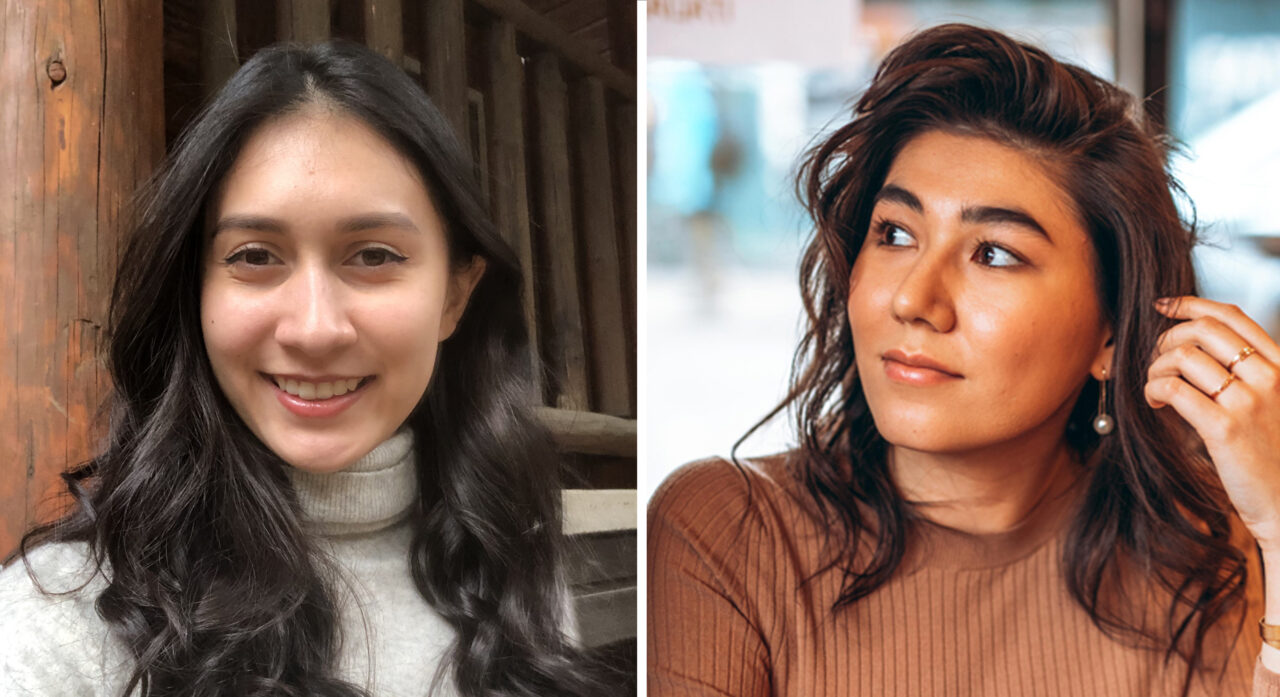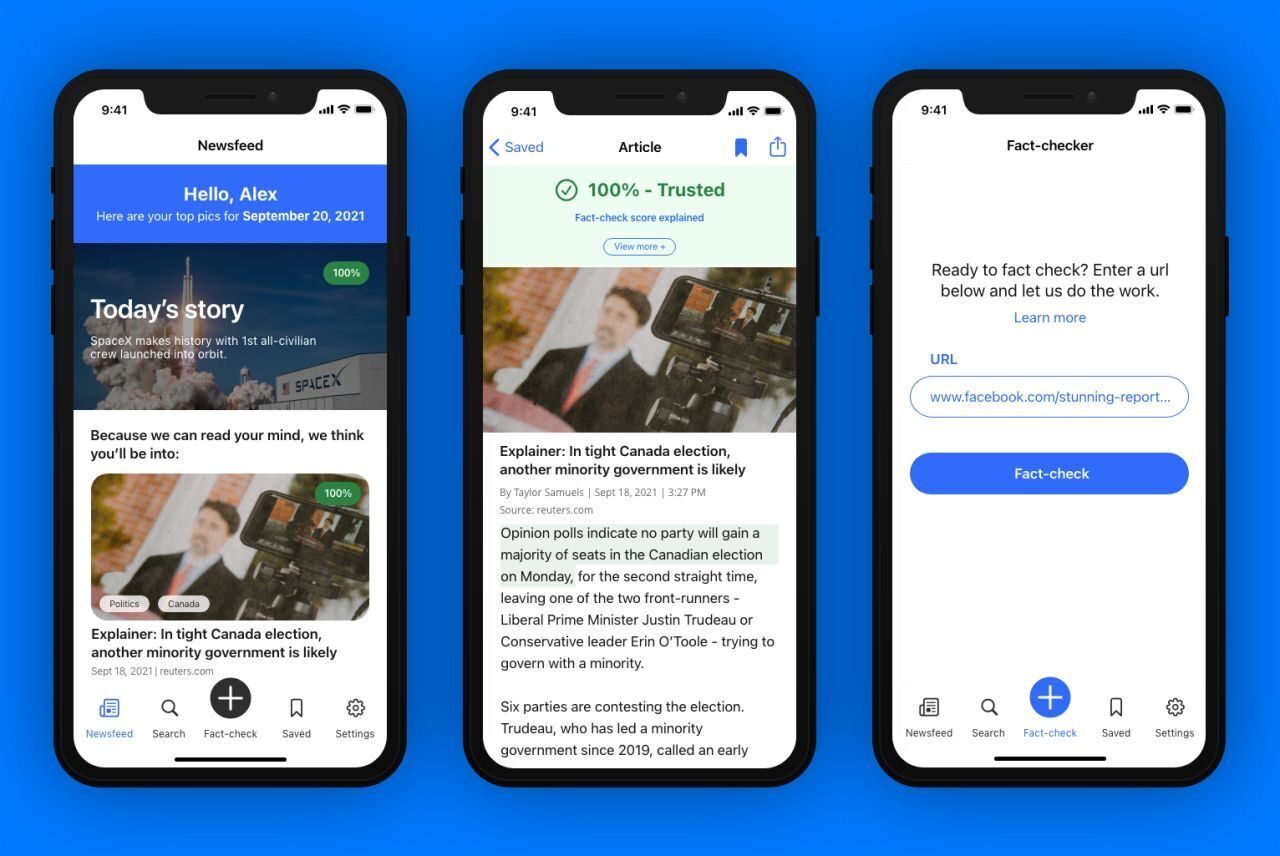NY Times, Adobe Commend Media App by UX Design Students

The Newsfluent app by UX designers Desiree Chek and Alina Danilyuk. (Image courtesy Desiree Chek and Alina Danilyuk)
Posted on | Updated
Alina Danilyuk and Desiree Chek won fifth place from among 315 teams for their Newsfluent app, designed to vet online news sources.
A pair of ECU students were finalists in a recent week-long Adobe Creative Jam hackathon, in partnership with the New York Times, which challenged competitors from across Canada, the US and the UK to create an app for improving media literacy.
Alina Danilyuk and Desiree Chek, both students in ECU’s User Experience (UX) Design Certificate program, placed fifth among 315 teams for their prototype app, Newsfluent, which uses an algorithm to fact-check news sources and allows users to share trustworthy information.
“Newsfluent was designed for young adults who are accessing news online, so they can take the URL from any online news source and input it into the app to get a fact-check score and more detailed information about the trustworthiness of that source,” Desiree tells me via video chat.
Newsfluent uses an existing fact-checking framework which scans for “currency, relevancy, authority, accuracy and purpose” to establish whether a news story contains reliable information. Alina and Desiree chose to focus on young adults as their audience after reflecting on research that revealed three quarters of young Canadians get their news online. Meanwhile, a separate study found that 65 per cent of young Canadians report seeing misinformation at least once per week.
“Most people are on social media, and when you’re getting a lot of your information there, it can be very hard to tell what’s true and what’s not. You have to be really conscious about the content that you consume” Alina tells me.

Designers Desiree Chek (L) and Alina Danilyuk (R). (Images courtesy Desiree Chek and Alina Danilyuk)
Because Alina and Desiree placed in the international competition, they got the opportunity to receive feedback from designers at Adobe as well as from the New York Times.
“It was great to have them look through our project and give us points to improve on,” Desiree says.
The project was extracurricular, meaning the two emerging designers had to balance their schoolwork with the gruelling hours they kept to meet the hackathon’s deadlines. They met remotely each morning to set out goals, and often worked with a video-conferencing app constantly open to stay in communication. But because the topic is one they can relate to, Desiree and Alina say they didn’t find it difficult to stay engaged.
“We’re really passionate about it, so we found the time for it,” Alina says.
Desiree notes the chance to work as a pair was also a big reason they wanted to take on the challenge. “The opportunity to work together collaboratively on a project was really exciting and something that we wanted to work more on — improving teamwork,” she says.
Design is fundamentally a collaborative practice, the pair tell me. So, communication is key. Any chance to improve your skills in that area — especially in high-pressure situations — should be welcomed. With that in mind, Desiree and Alina say they’d definitely be open to another hackathon, even once they start working in the design industry.

Newsfluent uses an algorithm to fact-check news sources and allows users to share trustworthy information. (Image courtesy Desiree Chek and Alina Danilyuk)
“It was a really exciting experience,” Alina says. “I would wake up and the first thing I would want to do is continue working on Newsfluent. This is something that we’re really proud of.”
“It’s something that I think is really fun and good for helping keep your skills sharp,” Desiree says, adding she’s particularly pleased with the work they did on Newsfluent. “We didn’t really expect to win, but it was a really great experience. We had a lot of fun and we’re really glad and happy with how it turned out.”
You can view the prototype for Newsfluent online, now. Learn more about Desiree’s work on her website, and about Alina’s work via LinkedIn.
--
Learn more about the User Experience (UX) Design Certificate program at ECU’s website, today.